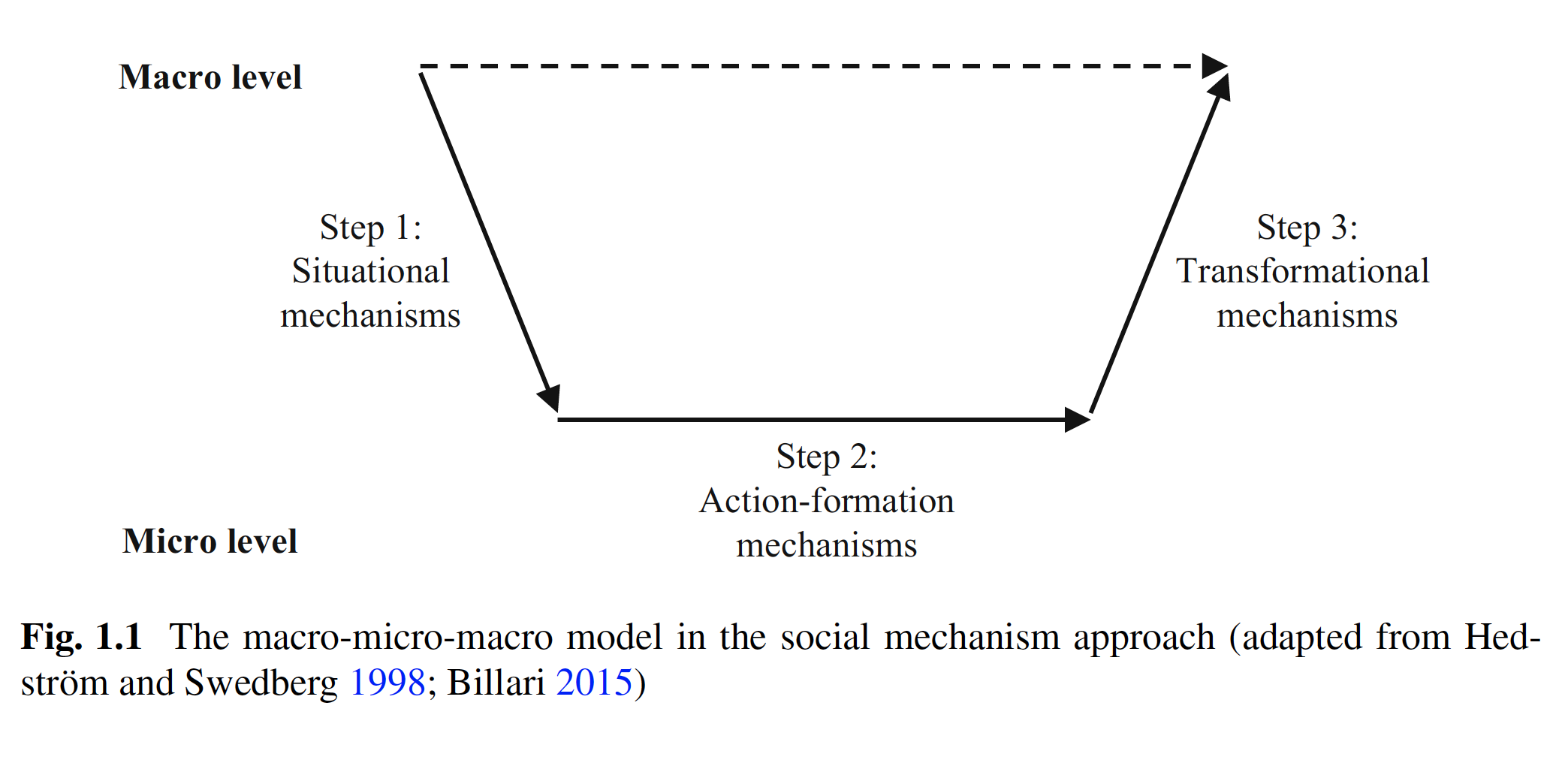Agent-Based Modelling as a Tool to Advance Evolutionary Population Theory
By Jan Van Bavel and André Grow, 2016
This article serves as the introduction to the book Agent-based modeling in population studies, edited by Bavel and Grow. Besides previewing the contributions made in the rest of the book, the authors discuss three important overarching topics:
1. Demography is “rich in methods, but poor in theories”
Bavel and Grow describe the historical development of demography as a discipline that primarily serves governments by meticulously tracking populations for policy purposes. As a result, they argue, the field has become mostly dominated by research using national samples to document trends. Relatively less work has gone towards theorizing the individual-level mechanisms that produce those trends, because such work is not valued unless it ties back to nationally representative data. They argue, like Billari over a decade earlier, that agent-based modelling is the key to pushing forward theory, because simulations based on these models can show how macro-scale trends emerge from individuals interacting according to theoretically-determined sets of constraints.
2. The macro-micro-macro model
The authors present the following diagram to describe the mechanisms in which demographers are interested:

Step 1 describes how individuals are affected by their surroundings. For instance, how one’s neighborhood of birth affects their life expectancy. Step 2 describes how individuals make decisions under external constraints, like deciding when to marry or how many children to have. Step 3 is the hardest to study. It describes how macro-level trends emerge from individual decisions. Bavel and Grow present agent-based modelling as a useful tool for carrying out this step, given that steps 1 and 2 have been carefully carried out for the question at hand.
3. The problem of validation
A key challenge for agent-based modelling is demonstrating that these models are more than just “good stories”. Bavel and Grow outline a common argument that agent-based models can be made to produce any results if their parameters are set in just the right way. They propose propose the agent-based models are no more susceptible to this problem than any other type of statistical model. Moreover, they emphasize that agent-based models are meant to be used alongside empirical data in research. The can serve as guides for identifying important measures prior to conducting an empirical exercise. If the model itself is central to a researcher’s argument, they should be able to muster a range of empirical findings, both central and tangential to the model, that it match with the model’s expected outputs.
Some of my thoughts…
Obvious parallels exist between the macro-micro-macro model and structural models in economics:
Models of supply and demand describe mathematically how individuals respond to prices and how their responses, in aggregate, determine how much of a good is consumed and produced. In a sense, this model is a generalization of the theoretical tools of economics beyond price mechanisms. This generalization is required, presumably, because price mechanisms can’t explain demographic and social phenomenon like fertility and migration.
In contrast to economic models which tend to be analytically solvable, we may only learn the outcomes complex agent-based models via simulation. However, economic models should still set the bar for validation. We should be able to see the trends that agent-based models predict in the same way that economists have long validated models of supply and demand.
Demography seems to lack well-established agent-based models for connecting these three steps. A potential exception is the Schelling model of neighborhood segregation, although even this has received criticism for its simplicity.